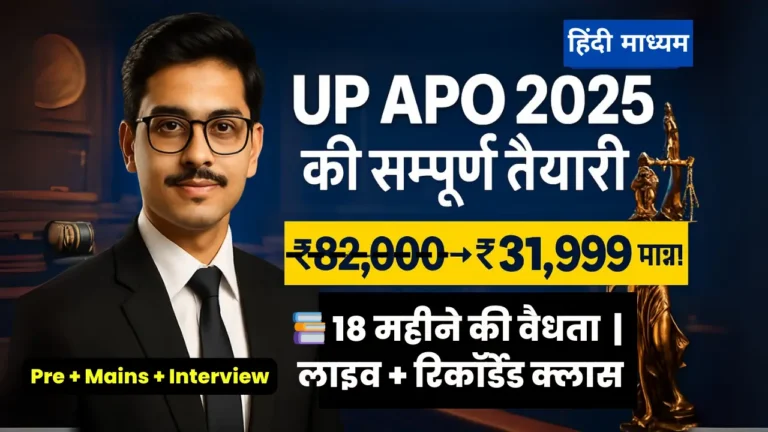Explore the National Education Policy 2020 with Doon Law Mentor. This blog analyzes its implementation, legal framework, transformative reforms, and education outcomes, offering critical insights for law students and lawyers studying India’s education system overhaul.
Table of Contents
Introduction
The National Education Policy 2020, approved by the Union Cabinet on July 29, 2020, represents a transformative framework to overhaul India’s education system, replacing the 1986 policy. Aimed at making India a global knowledge superpower, the National Education Policy 2020 introduces reforms across school and higher education, emphasizing equity, quality, and inclusivity. This educational blog, crafted by Doon Law Mentor, provides a comprehensive legal analysis of the National Education Policy 2020, examining its implementation challenges, constitutional and statutory framework, key reforms, and impact on education outcomes. Perfect for law students and lawyers, this analysis explores the policy’s alignment with India’s constitutional mandates and global education goals, offering critical insights into its potential to reshape the nation’s educational landscape by 2030.
Background: National Education Policy 2020
The National Education Policy 2020 emerged from extensive consultations initiated in 2015 under the T.S.R. Subramanian Committee, followed by the Kasturirangan Committee’s 2019 draft. Approved on July 29, 2020, it addresses systemic challenges like rote learning, access disparities, and employability gaps, as highlighted in India’s 98th ranking in the 2023 Education World Index. The policy builds on the Right to Education Act, 2009, which universalized education for ages 6–14, and extends its scope to ages 3–18. It aligns with UN Sustainable Development Goal 4 (SDG 4), promoting inclusive education. The National Education Policy 2020 renamed the Ministry of Human Resource Development to the Ministry of Education, signaling a renewed focus on holistic learning. Its implementation, however, faces challenges due to India’s federal structure, with education on the concurrent list, requiring Centre-State coordination.
Legal Framework of the National Education Policy 2020
The National Education Policy 2020 operates within India’s constitutional and statutory framework, ensuring compliance with fundamental rights and legislative mandates:
- Constitutional Provisions:
- Article 21A: Guarantees free and compulsory education for children aged 6–14, extended by the National Education Policy 2020 to ages 3–18 through early childhood care and education (ECCE).
- Article 14: Ensures equality, supporting the policy’s focus on equity for marginalized groups.
- Article 15(1): Prohibits discrimination, aligning with the policy’s inclusivity measures.
- Article 39(f): Directs the state to provide opportunities for children’s development, reflected in the policy’s holistic education goals.
- Seventh Schedule (Concurrent List, Entry 25): Empowers both Centre and States to legislate on education, necessitating cooperative federalism for implementation.
- Statutory Framework:
- Right to Education Act, 2009 (RTE Act): Mandates free education and quality standards, extended by the policy to pre-primary levels. The 2024 scrapping of the no-detention policy for Classes 5 and 8 aligns with the policy’s focus on learning outcomes.
- University Grants Commission Act, 1956: Governs higher education, requiring amendments for the policy’s proposed Higher Education Commission of India (HECI).
- National Council for Teacher Education Act, 1993: Supports teacher training reforms under the policy’s National Professional Standards for Teachers (NPST).
- Supreme Court Judgments:
- Unni Krishnan v. State of Andhra Pradesh, AIR 1993 SC 2178: Recognized education as a fundamental right, providing the basis for Article 21A and the policy’s universal access goals.
- TMA Pai Foundation v. State of Karnataka, (2002) 8 SCC 481: Upheld institutional autonomy, supporting the policy’s graded autonomy for colleges.
- P.A. Inamdar v. State of Maharashtra, (2005) 6 SCC 537: Clarified state roles in private education, relevant to the policy’s public-private partnerships (PPPs).
- Avinash Mehrotra v. Union of India, (2009) 6 SCC 398: Mandated safe school infrastructure, aligning with the policy’s infrastructure reforms.
- International Obligations: The National Education Policy 2020 aligns with SDG 4 and the UNESCO Education 2030 Framework, emphasizing equitable, quality education.
The policy’s legal foundation is robust, but its implementation requires legislative amendments and judicial oversight to address federal and regulatory challenges.
Read More: Women Reservation Act 2023 : Provisions, Challenges, and 2029 Election Impact
Key Reforms of the National Education Policy 2020
The National Education Policy 2020 introduces transformative reforms across school and higher education, detailed below:
- School Education Reforms:
- 5+3+3+4 Structure: Replaces the 10+2 system with a developmental model (Foundational: ages 3–8, Preparatory: ages 8–11, Middle: ages 11–14, Secondary: ages 14–18), emphasizing ECCE.
- Foundational Literacy and Numeracy (FLN): Aims for universal FLN by 2026–27 through NIPUN Bharat, launched in 2021.
- Multilingualism: Promotes mother tongue instruction until Grade 5, preferably Grade 8, under the three-language formula.
- Assessment Reforms: Introduces competency-based assessments via PARAKH and State Census Exams in Classes 3, 5, and 8, reducing reliance on rote learning.
- Vocational Education: Integrates skills like coding and carpentry from Grade 6, targeting 50% learner coverage by 2025.
- Higher Education Reforms:
- Higher Education Commission of India (HECI): Proposes a single regulator replacing UGC, AICTE, and NCTE, pending legislative approval.
- Flexible Degrees: Offers 3–4-year undergraduate programs with multiple exit options (certificate, diploma, degree) and an Academic Bank of Credit (ABC).
- Multidisciplinary Education: Eliminates distinctions between arts, sciences, and vocational streams, promoting holistic learning.
- Internationalization: Encourages global collaborations and foreign university campuses in India.
- Teacher Training:
- National Professional Standards for Teachers (NPST): Sets benchmarks for teacher quality.
- Integrated Teacher Education Programme (ITEP): Introduces 4-year teacher training programs.
- Technology Integration:
- National Educational Technology Forum (NETF): Promotes digital learning platforms and AI-based tools.
- National Digital Education Architecture (NDEAR): Supports interoperable digital infrastructure.
- Regulatory Reforms:
- Simplifies compliance through self-assessment and voluntary disclosures, reducing inspections.
- Strengthens PPPs for vocational education and digital access.
These reforms aim to create a student-centric, skill-oriented system, but implementation challenges persist.
Read More: Operation Kalnemi of Uttarakhand: A Simple Legal Guide for Law Students
Implementation Challenges of the National Education Policy 2020
The National Education Policy 2020 faces several legal, administrative, and practical hurdles:
- Federal Coordination:
- Education’s concurrent list status requires Centre-State alignment. As of 2025, only ~40% of states have fully adopted the 5+3+3+4 structure, per posts on X.
- States like Tamil Nadu have resisted multilingualism provisions, citing regional language concerns.
- Legislative Delays:
- The HECI’s establishment awaits parliamentary approval, delaying higher education reforms.
- Amendments to the UGC Act, 1956, and professional council acts (e.g., Pharmacy Council) are pending, creating regulatory conflicts.
- Resource Constraints:
- The policy’s goal of 6% GDP investment in education remains unmet, with 2024–25 allocations at ~4.6% (Economic Survey 2024–25).
- Rural schools lack digital infrastructure, hindering NDEAR implementation.
- Teacher Readiness:
- Insufficient training for competency-based teaching affects 60% of teachers, per a 2023 NIEPA study.
- NPST and ITEP rollouts are incomplete, delaying quality improvements.
- Assessment Transition:
- Shifting to PARAKH-based assessments requires systemic changes, with only 20% of schools adopting CCE by 2025 (The Hindu, 2024).
- Equity Gaps:
- Marginalized groups face access barriers, with 30% of rural girls dropping out post-Class 8 (ASER 2023).
- The 2024 reintroduction of detention in Classes 5 and 8 risks increasing dropouts among disadvantaged students.
- Monitoring Mechanisms:
- Lack of uniform metrics hampers evaluation, with Vidya Samiksha Kendra implemented in only 15 states by 2025.
- Resistance to Change:
- Stakeholders, including teachers’ unions, criticize hasty implementation, as noted by JNU Students’ Union (2021).
- Commercialization concerns persist, with private institutions resisting regulatory reforms.
These challenges highlight the need for robust execution plans, as outlined in SARTHAQ (2021), which delineates 297 tasks for implementation.
Education Outcomes: Achievements and Gaps
The National Education Policy 2020 has yielded mixed outcomes four years into its rollout:
- Achievements:
- FLN Progress: NIPUN Bharat has improved literacy rates by 10% in Grade 3 (ASER 2024), with tools like “Jadui Pitara” aiding play-based learning.
- Vocational Education: 5,000 schools introduced coding and entrepreneurship by 2025, though far below the 50% target (<10% coverage).
- Regional Language Inclusion: AICTE-approved engineering courses in 11 regional languages reached 50,000 students by 2024.
- Digital Learning: NDEAR enabled 1.2 million students to access online content via DIKSHA (2024 MoE report).
- PM SHRI Schools: Over 14,500 exemplar schools developed under the scheme by 2025.
- Gaps:
- Learning Outcomes: Only 45% of Grade 5 students achieved FLN benchmarks in 2024, missing the 2026–27 target (ASER 2024).
- Teacher Training: 40% of teachers lack NPST-compliant training, impacting pedagogy (NIEPA, 2023).
- Higher Education: The 4-year undergraduate program is implemented in only 30% of universities, pending UGC approval.
- Equity: Dropout rates for SC/ST students remain high at 15% in secondary education (MoE, 2024).
- Assessment Reforms: PARAKH is operational in only 10 states, delaying competency-based evaluation (The Hindu, 2024).
Case studies, like LEAD’s NEP-aligned solutions, show improved exam performance (e.g., 70% at Mother Care School, Gujarat), but scalability remains a challenge.
Case Study: NIPUN Bharat in Rajasthan
Rajasthan’s implementation of NIPUN Bharat under the National Education Policy 2020 offers insights into FLN outcomes:
- Achievements: By 2024, 80% of Grade 3 students achieved basic literacy, up from 65% in 2020, due to play-based tools and teacher training (MoE, 2024).
- Challenges: 30% of rural schools lack trained teachers, and digital tools are inaccessible in 40% of remote areas (ASER 2024).
- Lessons: State-specific plans and PPPs are critical, but uniform monitoring is needed for scalability.
This case study underscores the policy’s potential and implementation gaps.
Table: Key Reforms and Challenges of National Education Policy 2020
| Reform | Details | Challenges |
|---|---|---|
| 5+3+3+4 Structure | Replaces 10+2, covers ages 3–18 | ~40% state adoption, curriculum alignment issues |
| FLN (NIPUN Bharat) | Universal literacy by 2026–27 | 45% Grade 5 students meet benchmarks |
| HECI | Single higher education regulator | Legislative delays |
| Vocational Education | Skills from Grade 6, 50% target | <10% coverage by 2025 |
| PARAKH | Competency-based assessments | Implemented in 10 states |
| NDEAR | Digital infrastructure | Rural digital divide |
Contemporary Relevance
The National Education Policy 2020 addresses India’s educational challenges, aligning with SDG 4 and India’s 2047 development goals. It promotes equity and skill development but faces delays, resource constraints, and resistance. For law students and lawyers, the policy’s constitutional and regulatory implications offer critical insights into federalism, education rights, and policy implementation.
Conclusion: Key Takeaways
The National Education Policy 2020 is a visionary framework to transform India’s education system, emphasizing equity, quality, and innovation. While constitutionally sound under Articles 21A and 14, its implementation faces federal, legislative, and resource challenges. Achievements like NIPUN Bharat show progress, but gaps in FLN, vocational education, and assessment reforms persist. Law students and lawyers can explore more at Doon Law Mentor via doonlawmentor.com.
Key Takeaways:
- The National Education Policy 2020 introduces a 5+3+3+4 structure and FLN focus, effective post-2020.
- Challenges include federal coordination and legislative delays.
- Education outcomes show progress (e.g., 10% literacy gains) but miss targets.
- Critical for studying constitutional and education law.
- Systemic reforms are essential for success.
FAQs
What is the National Education Policy 2020?
The National Education Policy 2020 is a framework to transform India’s education system, focusing on equity, quality, and inclusivity.
Why is implementation delayed?
Federal coordination, resource constraints, and legislative delays hinder progress, with only ~40% state adoption.
What are the main criticisms?
Delays, teacher readiness, and equity gaps are key concerns, per stakeholder feedback.
How does the policy impact education law?
It aligns with Article 21A and RTE Act, requiring legislative amendments for HECI.
Where can I learn more?
Visit Doon Law Mentor for in-depth resources
#NationalEducationPolicy2020 #EducationReforms #NEP2020 #DoonLawMentor






